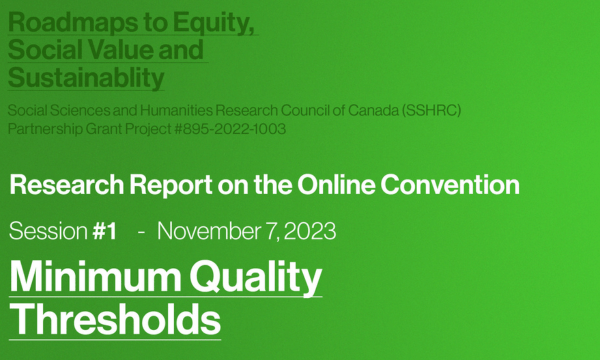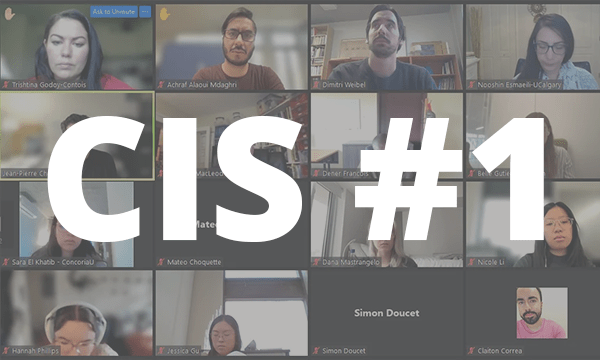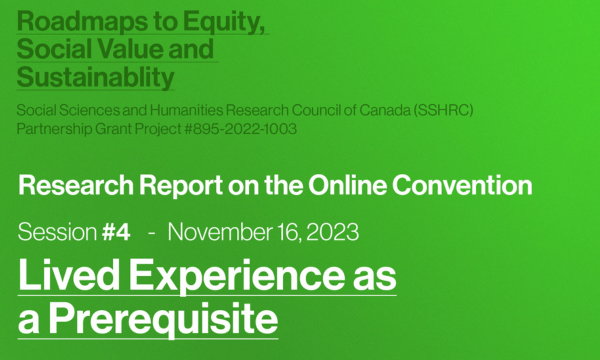This summary covers the third online session in a series of four, showcasing roadmaps from four research sites across Canada. The session highlights progress and actionable strategies on key topics, including community-led First Nations housing, regenerative communities, inclusive school design, and parks as critical infrastructure. Learn how these collaborative projects are addressing challenges and shaping solutions for a more sustainable and equitable built environment.
*Please note that the following summary was created with the help of an AI tool (fireflies.ai).
🌍 Project Overview and Midterm Update (04:58 – 06:54)
Jean-Pierre Chupin introduces the midterm status of the project
- The project is currently at its midterm phase, with a focus on transitioning from research to actionable outcomes.
- Upcoming sessions will cover diverse topics including community-led housing, regenerative communities, inclusive schools, and residue parks.
- The next in-person convention is scheduled for May 2025 at the University of Toronto to assess the implementation of actions developed during the project.
Project spans from Montreal to Calgary, Halifax, and Toronto
- The project involves collaboration among various cities in Canada, including Montreal, Calgary, Halifax, and Toronto.
- It aims to address issues related to quality in the built environment through research and community engagement.
- The project includes a series of conventions and presentations to share findings and develop actionable strategies.
Focus on transitioning from research to action
- The importance of collaborative partnerships with community stakeholders to ensure research findings are relevant and actionable.
- The need for ongoing evaluation and feedback mechanisms to adapt and improve actions based on real-world outcomes and community needs.
- The significance of integrating local knowledge and cultural perspectives into the design and implementation of solutions to enhance community ownership and sustainability.
Roadmaps available on the Living Atlas of Quality digital platform
- Roadmaps provide a structured approach to understanding and implementing quality in various built environments.
- They are accessible to researchers, practitioners, and community members, promoting collaboration and knowledge sharing.
- The Living Atlas of Quality serves as a dynamic resource that evolves with ongoing research and community feedback.
Teams to present problems, research process, and forthcoming actions
- Teams are addressing the transition from research to actionable solutions in various community-focused projects.
- Each team presents their unique challenges, research methodologies, and planned actions tailored to specific community needs.
- The emphasis is on collaboration with local stakeholders to ensure that proposed solutions are sustainable and culturally relevant.
🏘️ Community-Led First Nations Housing (07:49 – 15:44)
Panos Polizoys presents the University of Manitoba project
- The project emphasizes co-development of housing solutions through collaboration with Indigenous communities, practitioners, and academics.
- It addresses the unique challenges faced by First Nations communities regarding housing quality, sustainability, and self-determination.
- The research involves engaging with community members through roundtable events to share knowledge and develop pathways for affordable housing solutions.
Focus on affordable and sustainable First Nations housing
- Affordable and sustainable First Nations housing emphasizes the following key aspects:
- Community-led design processes that incorporate Indigenous knowledge and values to ensure housing meets the unique needs of First Nations communities.
- Collaboration with local practitioners, academics, and community representatives to co-develop housing solutions that prioritize sustainability and self-determination.
- Addressing systemic barriers, such as overcrowding and inadequate infrastructure, through innovative approaches that promote quality living conditions and respect for the land.
Collaboration with practitioners, academics, and indigenous communities
- It encourages the integration of diverse perspectives, ensuring that solutions are culturally relevant and context-specific.
- Such partnerships enhance capacity building within communities, empowering local voices and promoting sustainable practices.
Emphasis on sustainability and self-determination
- Sustainability in housing for Indigenous communities focuses on using local materials and traditional building practices to create environmentally friendly and culturally relevant homes.
- Self-determination empowers Indigenous communities to define their own housing needs and solutions, ensuring that projects reflect their values, traditions, and aspirations.
- Collaborative partnerships between Indigenous communities, researchers, and practitioners facilitate knowledge sharing and capacity building, leading to more effective and sustainable housing solutions.
Held five roundtable events to discuss housing challenges
- The roundtable events brought together industry practitioners, academics, community leaders, and youth to share knowledge and build relationships.
- Discussions focused on the unique challenges faced by First Nations communities regarding housing quality, affordability, and sustainability.
- The events aimed to co-develop pathways for quality housing through collaboration and to promote truth and reconciliation in the context of Indigenous housing issues.
🌱 Regenerative Communities Research (30:05 – 35:05)
Kaiden Reding and Twylla Soosay present Athabasca University’s research
- The research focuses on housing and food sovereignty in rural, regional, and remote communities in Canada.
- It emphasizes the principles of ecological restoration, cultural richness, social justice, and community empowerment.
- The project aims to develop sustainable practices and strategies that enhance community well-being and resilience.
Focus on housing and food sovereignty in rural, regional, and remote communities
- Housing and food sovereignty are interconnected issues that significantly impact rural, regional, and remote communities.
- These communities often face challenges such as limited access to affordable housing, which exacerbates food insecurity and limits economic opportunities.
- Strategies for improving housing quality and food sovereignty include community-led initiatives that emphasize local resources, sustainable practices, and culturally relevant solutions.
Emphasis on decommodification of food and housing
- Decommodification of food and housing seeks to remove these essential needs from market-driven forces, ensuring access for all individuals regardless of economic status.
- This approach promotes community-based solutions and local production, fostering resilience and self-sufficiency within neighborhoods.
- By prioritizing social equity and environmental sustainability, decommodification aims to create systems that support long-term well-being and reduce vulnerability to economic fluctuations.
Development of six modules showcasing case studies
- The six modules are designed to showcase alternative methods for revitalizing rural communities.
- Each module includes case studies that highlight successful community engagement and innovative solutions.
- The modules aim to deepen understanding of lived experiences and promote action towards quality in housing and food sovereignty.
Collaboration with Alberta Real Estate Foundation
- The partnership aims to develop modules showcasing case studies that address affordability and sustainability in rural communities.
- This collaboration emphasizes the importance of community empowerment and resilience in addressing housing challenges.
🏫 Inclusive Schools Design (49:56 – 01:01:26)
Susan Fitzgerald presents Dalhousie University’s research on inclusive schools
- Research focuses on creating inclusive school environments that foster a sense of belonging for all students, particularly those with diverse backgrounds and abilities.
- Emphasizes the importance of post-occupancy evaluations to assess how well school designs meet the needs of users and to inform future projects.
- Involves collaboration with community partners, including students and educators, to ensure that the design process incorporates a wide range of perspectives and experiences.
Focus on creating spaces that foster feelings of belonging
- Creating spaces that foster feelings of belonging can enhance community engagement and well-being.
- Inclusive design should consider the diverse needs of all users, ensuring accessibility and comfort for everyone.
- Incorporating local culture and community input into the design process can strengthen connections and promote a sense of ownership among residents.
Identified issues: overcrowding, exclusion in design process, high construction costs
- Overcrowding in schools leads to negative impacts on mental well-being for students and staff, affecting overall learning environments.
- Exclusion in the design process results in spaces that do not meet the diverse needs of all users, particularly adolescents and those with disabilities.
- High construction costs, especially in rural areas, hinder the ability to create inclusive and well-designed educational spaces, limiting access to quality education.
Conducted field work in two awarded schools in Halifax
- Analyzed architectural plans and conducted photographic documentation to compare intended vs. actual use of spaces
- Engaged with students and staff through interviews and a school building report card to gather feedback on school environments
Developed a school building report card for evaluation
- The report card allows students and staff to provide feedback on the quality and functionality of school spaces.
- It includes open-ended questions and grading scales to assess various aspects of the school environment.
- The findings from the report card will inform future design and renovation decisions to enhance learning spaces.
🌳 Parks as Critical Infrastructure (01:08:51 – 01:29:47)
Fadi Masoud presents University of Toronto’s research on parks
- Fadi Masoud emphasizes the importance of parks as critical infrastructure for social equity and environmental resilience in urban settings.
- The research involves a geospatial analysis to identify parks that require improvement, focusing on areas with high need and low investment.
- A proposed solution includes creating a standardized maintenance and management system for parks that integrates community involvement and long-term stewardship.
Focus on linking social equity and environmental resilience in park design
- Linking social equity and environmental resilience in park design can be achieved through the following approaches:
- Incorporating community input in the design process to ensure parks meet the diverse needs of local populations, particularly marginalized groups.
- Implementing green infrastructure solutions, such as native plant landscaping and permeable surfaces, to enhance environmental resilience while providing accessible recreational spaces for all community members.
- Establishing maintenance and stewardship programs that engage local residents, fostering a sense of ownership and responsibility for park spaces, which can lead to improved environmental outcomes and social cohesion.
Analyzed policies and literature to understand quality parks
- Identified gaps in park management and maintenance through recent audits and reports, highlighting the need for improved oversight and resource allocation.
- Examined the relationship between social equity and environmental resilience in park design, emphasizing the importance of accessible green spaces for underserved communities.
- Developed methodologies for assessing park quality, focusing on social factors, ecological performance, and infrastructure conditions to prioritize areas for improvement.
Developed methodologies to prioritize park improvements
- Utilized geospatial analysis to identify parks with high environmental issues and equity-deserving populations for targeted improvements.
- Created observation templates to assess social factors, ecological performance, and infrastructure quality in selected parks.
- Developed a shortlist of parks for improvement based on observed conditions, categorizing opportunities into short, medium, and long-term actions.
Proposed new paradigm for maintaining park quality long-term
- Establish a standardized maintenance code that categorizes parks based on their specific characteristics rather than size, ensuring tailored care and management.
- Integrate community involvement in park stewardship by creating mechanisms for local residents to participate in maintenance and decision-making processes, fostering a sense of ownership and responsibility.
- Develop a feedback loop between designers and maintenance teams to ensure that design intent aligns with long-term maintenance needs, promoting sustainability and quality in park management.



